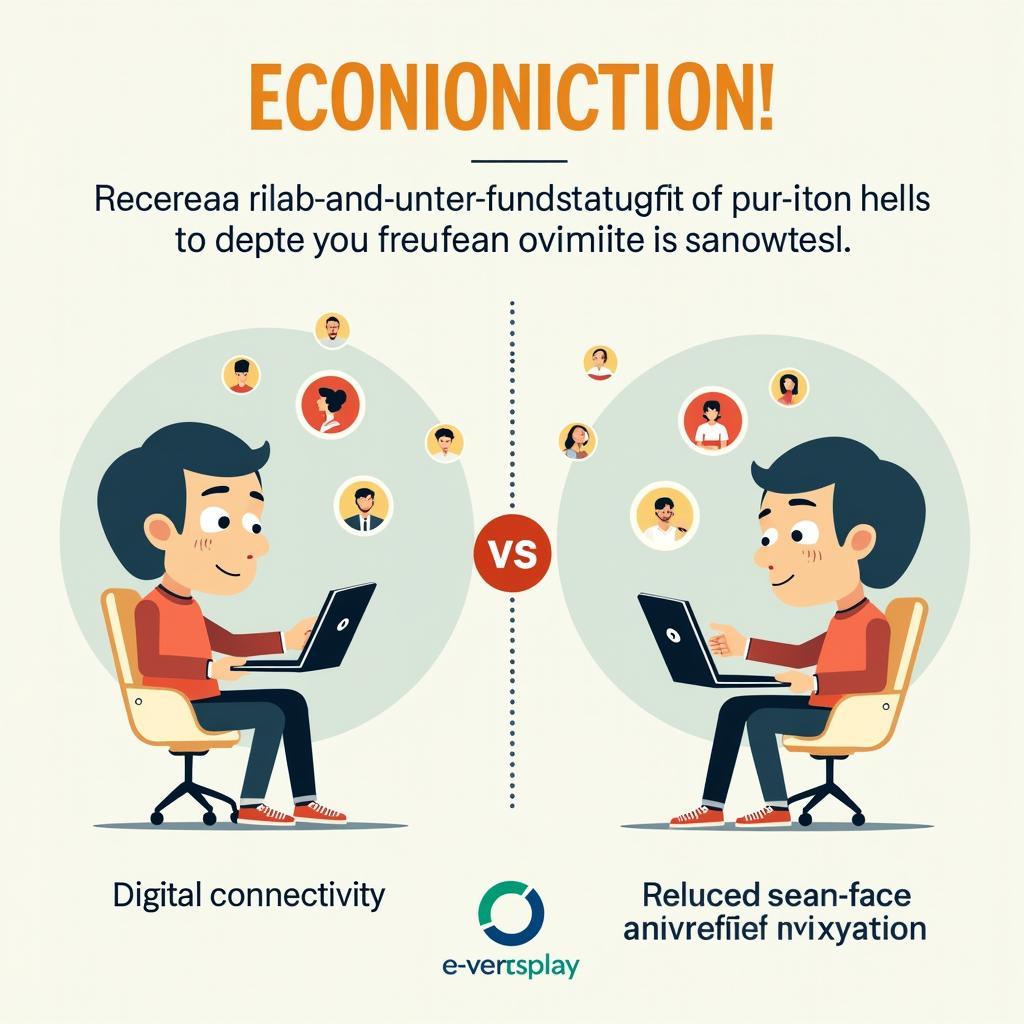The topic of technology’s influence on social interaction has become increasingly prevalent in IELTS Writing Task 2, appearing in various forms over the past decade. This theme frequently emerges in agree/disagree, discussion, or advantages/disadvantages essay types, making it essential for IELTS candidates to master. Recent examination trends suggest this topic will continue to be significant, particularly given the accelerated digital transformation post-pandemic.
Let’s examine a recent IELTS question that has appeared in multiple test centers:
Some people believe that modern technology has made it easier for people to communicate with one another, while others argue that technology has led to decreased face-to-face interaction and weakened social bonds. Discuss both views and give your own opinion.
Analysis of the Question
This question requires candidates to:
- Discuss both perspectives on technology’s impact on communication
- Provide a balanced analysis
- Include personal viewpoint
- Support arguments with relevant examples

Sample Essay 1 (Band 8.5)
The digital revolution has transformed how we connect with others, sparking debate about its effects on social interaction. While some maintain that technology has enhanced communication capabilities, others contend it has diminished meaningful personal connections. In my view, while technology offers unprecedented connectivity, it has indeed reduced the quality of face-to-face interactions.
Modern technology has undeniably made communication more accessible and efficient. Through platforms like video conferencing and instant messaging, people can maintain relationships across vast distances, which was previously impossible. For instance, how technology affects children’s social skills shows that students can now collaborate with peers worldwide, expanding their cultural understanding and social networks. Furthermore, social media platforms enable individuals to stay connected with large networks of friends and family simultaneously.
However, critics argue that this digital convenience has come at the cost of genuine human connection. Many people now prefer texting over face-to-face conversations, leading to less social connection in communities now. Research indicates that excessive screen time correlates with reduced empathy and emotional intelligence, as people miss out on crucial non-verbal cues and emotional nuances that only in-person interactions can provide.
In my assessment, while technology has revolutionized communication accessibility, it has inadvertently promoted superficial interactions. The convenience of digital communication often leads to shortened, less meaningful exchanges, replacing deep conversations with quick messages and emoji responses. This trend is particularly evident in how impact of virtual reality on human interaction continues to reshape social norms.
Therefore, while acknowledging technology’s benefits in connecting people globally, we must actively work to preserve meaningful face-to-face interactions to maintain strong social bonds and emotional connections.
Sample Essay 2 (Band 6.5)
Modern technology has changed how people communicate with each other. Some people think it helps communication, while others believe it reduces real social interaction. I will discuss both sides and give my opinion.
On the positive side, technology makes it easier to stay in touch with people. We can use smartphones and computers to talk to friends and family anywhere in the world. For example, during the COVID-19 pandemic, many people used video calls to keep in contact with loved ones. Social media also helps us share our lives with many people at once.
However, there are problems with too much technology use. Many people spend too much time on their phones instead of talking to people face to face. This is especially true for young people who prefer texting to real conversations. Also, effects of online gaming on youth behavior shows that many teenagers spend more time playing games than socializing.
In my opinion, technology has both good and bad effects on communication. While it helps us stay connected with people far away, it can make us less social in real life. I think we need to find a balance between using technology and having real conversations with people.
Vocabulary Analysis
- Digital revolution (n) /ˈdɪdʒɪtəl ˌrevəˈluːʃən/ – the transformation to digital technologies
- Unprecedented (adj) /ʌnˈpresɪdentɪd/ – never known or done before
- Superficial (adj) /ˌsuːpəˈfɪʃəl/ – not thorough or deep
- Empathy (n) /ˈempəθi/ – ability to understand others’ feelings
- Non-verbal cues (n) /nɒn ˈvɜːbəl kjuːz/ – communication without words
- Emotional intelligence (n) /ɪˈməʊʃənl ɪnˈtelɪdʒəns/ – ability to understand emotions
- Inadvertently (adv) /ˌɪnədˈvɜːtəntli/ – unintentionally
- Cultural understanding (n) /ˈkʌltʃərəl ˌʌndəˈstændɪŋ/ – awareness of different cultures
In conclusion, mastering this topic is crucial for IELTS success. Practice writing essays about related subjects like social media addiction, online education’s impact on socialization, or workplace communication changes due to technology. Share your practice essays in the comments for feedback and improvement suggestions.